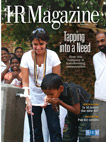Develop Future Leaders from All Levels of the Organization
Leaders don't emerge in a vacuum, so invest in developing all your employees.

 Organizations seem to be growing more concerned with succession planning and a potential dearth of leaders as Baby Boomers gear up for retirement—but they may not be thinking long range enough.
Organizations seem to be growing more concerned with succession planning and a potential dearth of leaders as Baby Boomers gear up for retirement—but they may not be thinking long range enough.
In 2013, for the second consecutive year, U.S. organizations increased spending on leadership development by an average of 14 percent, with total spending at an estimated $15.5 billion, according to research released in May 2014 by Bersin by Deloitte. The biggest increase—of 23 percent—occurred among businesses with fewer than 1,000 employees; large (10,000 or more employees) and midsize organizations raised their leadership spending by 4 percent and 5 percent, respectively.
Organizations also increased the number of employees responsible for developing future leaders by an average of 12 percent. In 2013, organizations of all sizes dedicated an average of 17 percent of their leadership development budgets to developing high-potential professionals not yet in managerial roles.
While this focus on future leaders is admirable, businesses may be taking their eye off the ball regarding the professional development needs of their other employees. The Society for Human Resource Management’s 2014 Employee Benefits research report, released in June, found that organizations in many cases are offering fewer professional and career development benefits in 2014 than in 2010. These included professional membership benefits, cross-training to develop skills not directly related to the job and college selection/referral assistance. In addition, fewer organizations are providing offsite and onsite professional development opportunities and professional license application or renewal fees in 2014 than they did in 2013.
In addition, Bersin found that first-level managers receive the lowest per-person share of leadership development resources. Its report stated that “The overall pipeline for leaders is weak, despite the efforts within many organizations to improve succession planning.”
In large organizations, Bersin found that “successors have been identified for just 10 percent of their first-level leaders and 19 percent of their mid-level leaders.” The pipeline at higher levels also looks weak; successors were identified for only 24 percent of senior-level positions and 36 percent of executive ones.
When it comes to succession planning, the stakes are high. Every month, more than 250,000 Americans turn 65. And while the financial crisis that wiped away billions in retirement savings meant that many Baby Boomers have extended their work tenure, the stock market has since rebounded, setting the stage for a new wave of retirements.
Most organizations realize this on some level. Global Human Capital Trends 2014, a separate research report from Deloitte Consulting LLP and Bersin by Deloitte, found that “building global leadership” is the most urgent priority of business and HR leaders.
Inevitably, investments in leadership development will be crucial. But future leaders can emerge from across a business—and training and developing all employees may be the best way to find them.
Jennifer Schramm is manager of the Workforce Trends program at SHRM.
Advertisement
An organization run by AI is not a futuristic concept. Such technology is already a part of many workplaces and will continue to shape the labor market and HR. Here's how employers and employees can successfully manage generative AI and other AI-powered systems.
Advertisement


